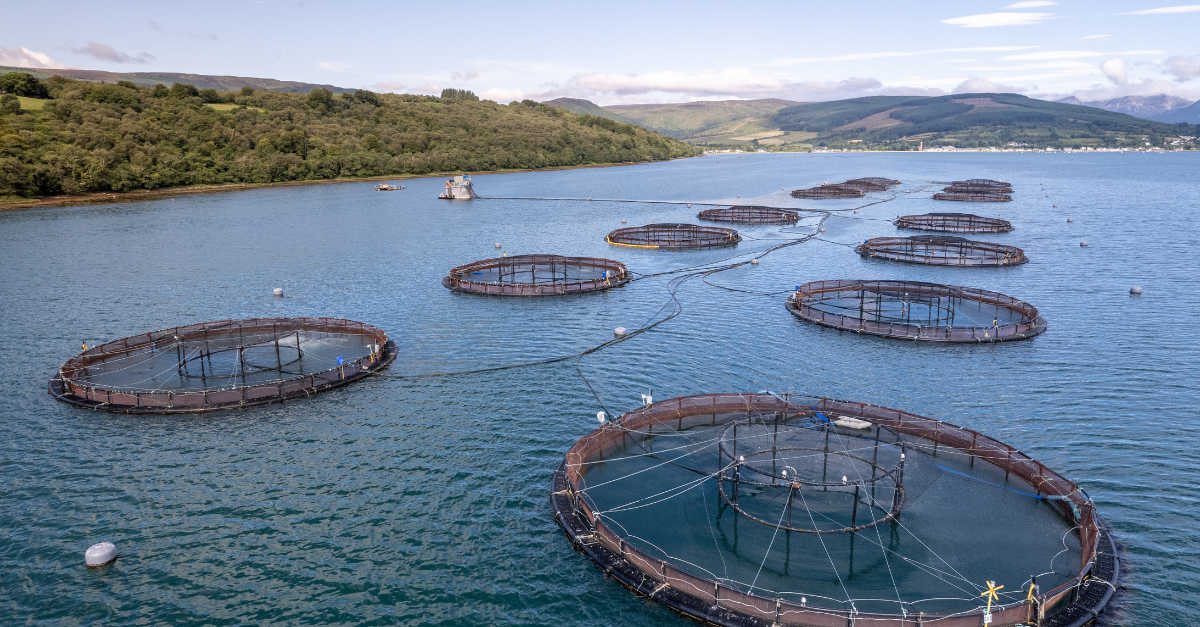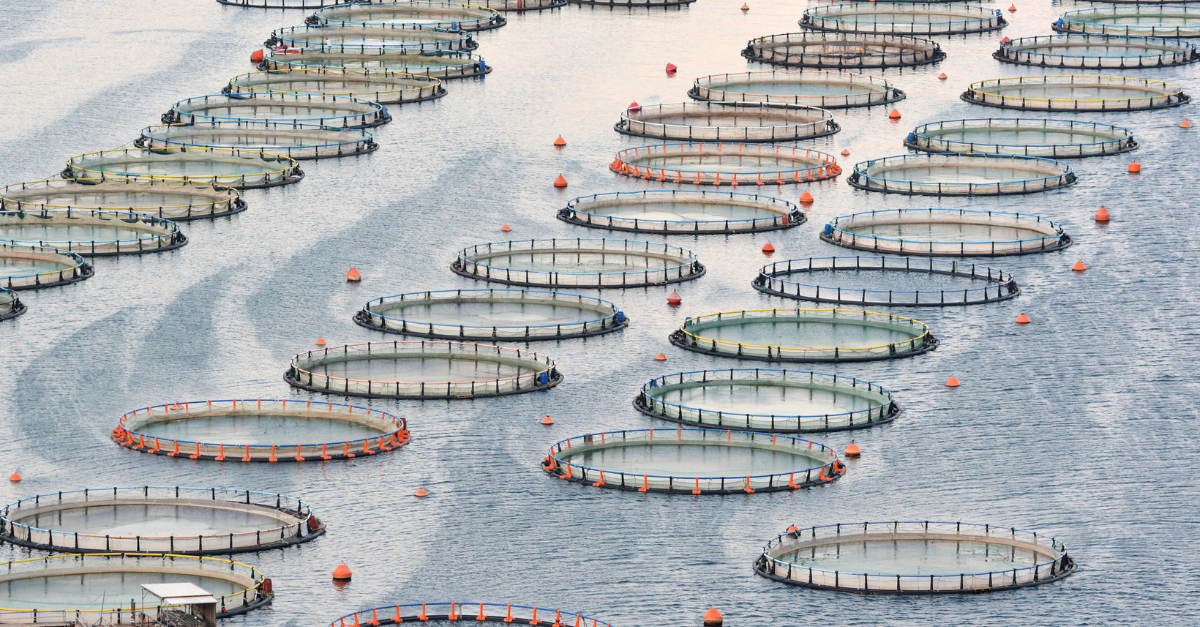Underwater Infrastructure Health: Leveraging Load Cells to Monitor Cage Integrity and Prevent Net Failures 📰
28th Aug 2025 In aquaculture, cages and nets that contain your valuable stock are far more than simple holding pens. They are a critical defence against stock loss, environmental harm, and operational disruption. As production sites are increasingly located in deeper, more exposed waters (and stocking densities rise to meet demand, the burdens on these structures intensify. Storm surges, strong tidal flows, biofouling and gradual material fatigue all take their toll over time.
In aquaculture, cages and nets that contain your valuable stock are far more than simple holding pens. They are a critical defence against stock loss, environmental harm, and operational disruption. As production sites are increasingly located in deeper, more exposed waters (and stocking densities rise to meet demand, the burdens on these structures intensify. Storm surges, strong tidal flows, biofouling and gradual material fatigue all take their toll over time.
The immediate financial costs become apparent when a cage or net fails. A single fish farm failure can result in the loss of thousands of fish which leads to major financial losses. The environmental impact of escapes from damaged infrastructure threatens both wild fish populations and leads to regulatory action. The process of fixing or replacing damaged infrastructure becomes more difficult because it takes place in harsh sea conditions which extends operational delays and increases costs. The detection of early warning indicators before a failure happens demands advanced load cell technology for underwater infrastructure structural health monitoring.
The Hidden Risk Beneath the Surface
A fish farm cage looks perfectly fine from above the water surface. However, the underwater forces that affect this structure remain unpredictable and persistent. The mooring lines are in constant motion. This is a direct reaction to wave energy. The tidal currents produce variable pressure on the structures. Fish swarming and the accumulation of biofouling throughout seasons creates irregular weight distribution across nets and support frames. The various factors that affect the infrastructure produce gradual weakening of essential components which remain invisible during standard inspection procedures.
The inspection frequency at offshore sites remains limited because sending divers involves high costs, safety risks and long inspection periods. Small weaknesses remain undetected for weeks or months until they reach a critical point where major failure becomes imminent. Emergency repairs under such circumstances are invariably far more expensive than preventive action taken earlier.
Load Cells as the First Line of Defence
Simply put, a load cell exists to measure force or tension. In aquaculture applications, submersible load cells can be built into mooring points, cage frames or support cables. The recording of forces at these points in real time provides a continuous picture of the stresses the structure is under.
A load pin installed at an anchor point can reveal unbalanced load distribution which indicates that one or more mooring lines are experiencing excessive strain. A submersible load shackle can indicate the change in tension in a bracing cable during storms or other extreme conditions. The strategic placement of multiple sensors generates data that creates a precise map of load distribution across the entire structure. Visual inspections are limited in use as they can only show the conditions at the time of observation. The system records changes in real time which enables the detection of trends and emerging risks before they reach critical levels.
Real-Time Alerts and Predictive Maintenance
Modern load cell systems measure forces and process and transmit this information instantly. Inputting safe load thresholds allows operators to receive alerts about structural strain as it happens. This allows for rapid intervention before equipment is compromised or damaged.
The value extends beyond immediate response. The historical load data system collects performance data from each component over an extended period and under various operational conditions. This monitoring of the system can perform predictive maintenance because patterns of increasing strain help identify weakening parts of the system. The system can then be repaired or replaced in the exact areas that need it, thus saving the cost of needlessly replacing components still in good condition.
Designed for Harsh Marine Conditions
For load cells to work properly, they must be able to deal with prolonged exposure to seawater, high pressures and mechanical impacts. The most effective systems use corrosion-resistant materials such as stainless steel or specially treated alloys and incorporate fully sealed electronics to prevent water ingress.
Wireless telemetry can be use to access valuable organisational data from above sea level locations, which enables shore-based data acquisition without exposing vulnerable cabling to the harsh conditions involved with salt water. For sub sea locations data logging facilities can be provided that allow data to be recorded and stored for long periods of time and retrieved periodically for download and analysis. It’s an ideal method of gathering data in remote or offshore areas where maintenance access is challenging. A submersible load cell system that is properly designed will continue to deliver reliable data for months or even years without any intervention, so that the operator always has an accurate understanding of infrastructure performance.
More Information on our Aquaculture Load Cells here.

Benefits for Aquaculture Operations
Continuous load monitoring for cage integrity offers numerous advantages. For example, early detection of problems allows operators to stop catastrophic failures which at worst can cause fish stock escape and extended operational disruption. The need for emergency repairs is greatly reduced, and maintenance can be planned in a way that optimises resources and minimises downtime.
There is also a clear environmental benefit. Preventing net and cage failures helps safeguard wild fish populations and maintain compliance with environmental regulations. Companies showing proactive equipment care and predictive maintenance can improve their sustainability reputation and build better relationships with regulators and stakeholders.
Applications in Practice
The all-round value of structural load monitoring exists across all four seasons. In winter, when storms are more frequent and severe, it provides reassurance that cages can withstand increased forces. Following a storm, operators can review the data to confirm whether the structure has returned to normal load levels or whether hidden damage has occurred.
This solution for offshore sites where employing a remote inspection team is a huge expense is particularly useful, not only from a financial viewpoint. The steady rise in load data can indicate seasonal biofouling growth which allows for planned cleaning or maintenance before the additional weight becomes a safety risk.
All this enhances productivity, learn more here.
A Smarter Approach to Infrastructure Protection
In an industry where operational efficiency, environmental responsibility and financial performance are tightly linked, the health of underwater infrastructure is too important to leave to chance. Submersible load cells, load pins and shackles provide an effective means of keeping cage structures under constant observation, delivering the data needed to prevent costly and damaging failures.
The early detection of potential problems enables more efficient maintenance operations which in turn minimises the risk of catastrophic loss. The technology provides a solid argument for any aquaculture business that needs to protect its assets and reputation and keep its stock safe and healthy.
LCM Systems is happy to discuss how they can customise load cell technology for your site. Our team provides guidance on sensor selection and installation and integration to help you preserve cage structure and protect your operation's long-term success.
For more information on using Advanced Load Cells, Contact LCM today